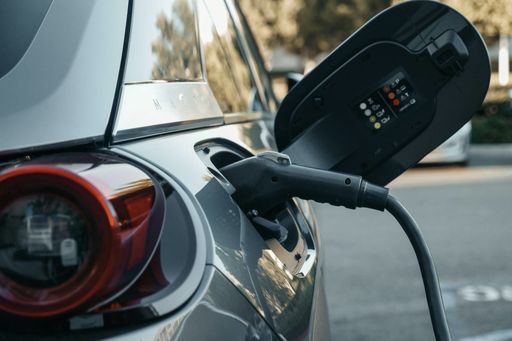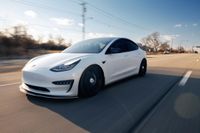Tesla's Future Shift: 67% of Earnings from AI by 2027
Tesla's business model is set to change drastically in the coming years as the company looks to expand into AI technology and self-driving vehicles. According to Cathie Wood's Ark Investment Management, 67% of Tesla's earnings will come from AI by 2027. This article explores Tesla's current business, its plans for growth, and the potential impact of AI on its revenue streams.

Here's what Tesla's business looks like today
Tesla is currently the leading electric vehicle (EV) manufacturer, with EV sales accounting for 84% of its revenue. The company has six gigafactories in operation and plans to expand to 12 by 2030. This expansion is necessary for Tesla to maintain its desired growth rate in the face of increasing competition from other automakers.
While Tesla enjoys economies of scale and higher profit margins compared to its competitors, it has been engaged in a price war to maintain its market share. This has resulted in slower revenue growth and a decline in earnings per share. To counter this, Tesla is focusing on developing its full self-driving (FSD) software, which it believes will transform its economics.
With over 2.7 million customer cars on the road testing FSD, Tesla has a significant lead in autonomous driving technology. The company plans to launch a fully autonomous robotaxi by 2024 and aims to generate recurring subscription revenue from FSD software installations. Tesla may also license its technology to other car manufacturers.
The robotaxi could transform Tesla's economics
Ark Investment Management predicts that by 2027, Tesla will generate over $1 trillion in annual revenue, with 44% coming from its robotaxi business. This revenue will mainly come from the sale of robotaxis, recurring subscription revenue from FSD software installations, and revenue from customer-owned Teslas operating in Tesla's ride-hailing network.
While Ark's forecasts may be ambitious, they highlight the potential of Tesla's shift towards AI and self-driving technology. However, it is important to note that competition in the autonomous vehicle market is growing, with companies like Uber already launching autonomous services. Achieving these revenue projections will depend on Tesla's ability to scale its robotaxi and ride-hailing businesses.
Ark's forecasts might be too ambitious
Tesla's current revenue and growth rates would need to significantly accelerate to reach Ark's $1 trillion revenue forecast by 2027. While Musk aims for 50% growth in EV production, achieving 80% annual revenue growth is a considerable challenge. Additionally, the scalability and profitability of Tesla's robotaxi and ride-hailing businesses remain uncertain.
While the future potential of Tesla's AI and self-driving technology is undeniable, investors should approach these forecasts with caution. While Ark's predictions may prove accurate over time, it is important to consider the challenges and competition Tesla faces in the coming years.


